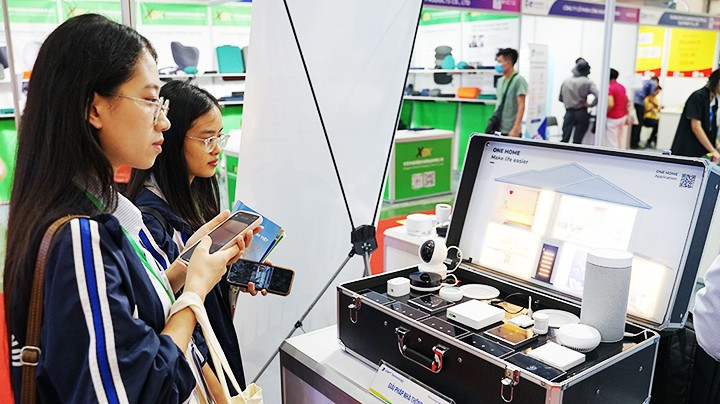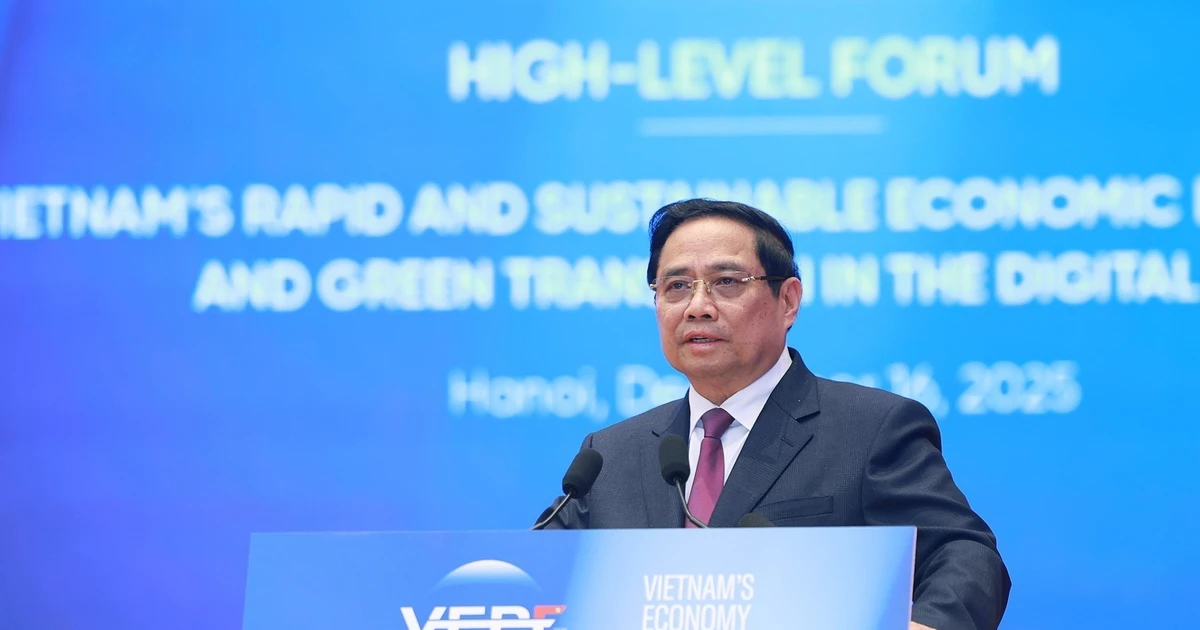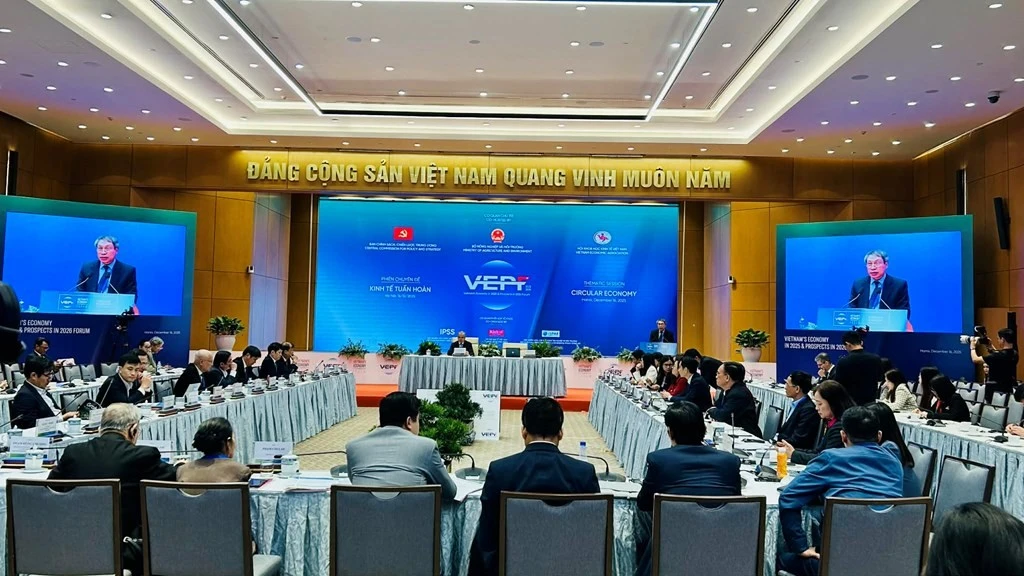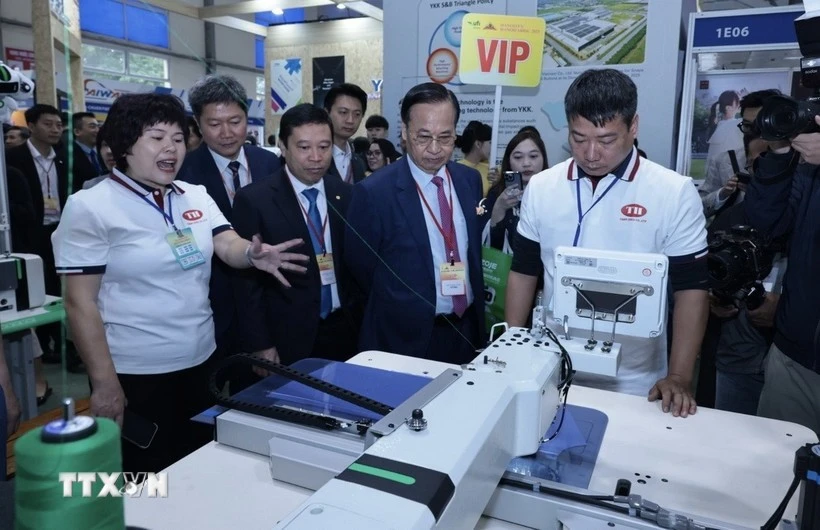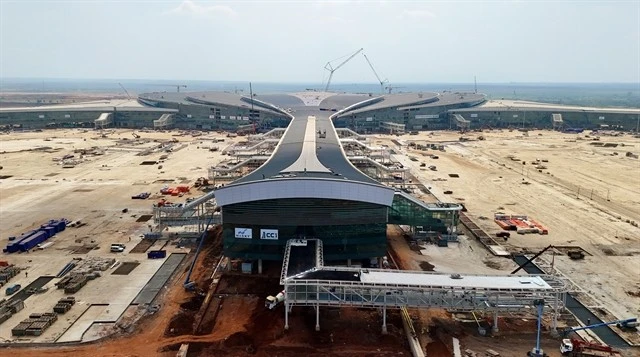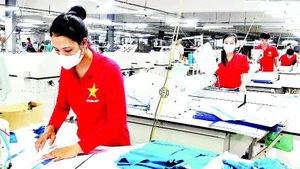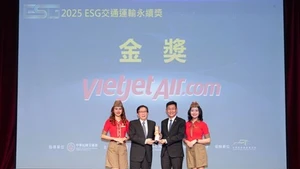According to the Ministry of Information and Communications, the total export value of electronic products in 2024 is estimated at 132.3 billion USD, up 16.8% from the previous year. For 2025, the ministry has set a target for an export turnover of 148.5 billion USD, an estimated increase of 12.3% from 2024.
Innovation and technology application as top priority
According to customs data, exports of computers, electronic products, and components reached 68.54 billion USD, accounting for the highest proportion of Vietnam’s total export turnover at 17.7%. Notably, the total export value of computers, phones, and electronic components accounted for nearly 40% of Vietnam’s total export turnover as of December 15, 2024, far exceeding other sectors.
After reaching the milestone of 1 billion USD in IT service revenue from foreign markets in 2023, FPT has set a target of 5 billion USD by 2030. Pham Minh Tuan, CEO of FPT Software, stated that with their forward-thinking strategy, the company focuses on researching the latest technologies and strongly shifting towards higher stages in the technology value chain.
Revenue from digital transformation services accounts for nearly 50% of total IT service revenue from foreign markets. This includes a focus on new technologies such as cloud services - accounting for 40% of digital transformation service revenue; other technologies like AI and data analytics at 12%; and RPA & low-code at 10%.
Capabilities in new technology areas are FPT’s “weapon” to compete with industry peers from India and China to secure contracts and customers, as well as taking the prime contractor role in major projects.
Not only in technology companies but in many manufacturing enterprises, technology and innovation have become crucial factors helping many businesses increase their competitiveness to conquer demanding markets.
To reduce dependence on imports, tile manufacturer Viglacera has gradually researched and mastered tile production technology over the past 30 years. From serving only domestic demand, the company’s products are now exported to more than 40 countries and territories.
One of the notable projects where the company’s products were chosen was the water cooling tower for the air conditioning system of the US Capitol Building. Surpassing competitors from many countries worldwide, the company’s products received a very high evaluation from partners.
According to Rod Applegate, President of Tower Engineering, to supply tiles for the US Capitol Building project, the company searched for various suppliers worldwide, and to date, only the Vietnamese enterprise has met their requirements for quality and environment.
According to Mai Xuan Duc, CEO of Viglacera, new technology and high-quality human resource training are two factors the company has always focused on for over 30 years. From this, products with high added value have been created to meet increasing demands from international markets.
In 2024, industrial product export turnover increased by 21% compared to last year. Recognising that the market is no longer easy, businesses have identified investment in science and technology as the key to growth. This is the foundation for domestic manufacturing enterprises to receive more orders from other demanding markets.
Efforts to remove the “assembly” label
Commenting on the weaknesses of the country’s export activities in recent years, economic expert Le Quoc Phuong suggested that Vietnamese exports are not yet sustainable, having only increased in quantity while quality improvement remains weak.
“We must continue institutional reform, promote administrative reform and reduce costs for businesses, so they can focus on production and business, improving competitiveness. It is necessary to continue developing human resources because if we want to boost exports, workers and engineers in high-tech industries must develop strongly”, said Phuong.
According to marketing expert Vu Quoc Chinh from the Ho Chi Minh City University of Economics, for developing countries, technology exports typically start with assembly and processing; design still accounts for a low proportion. However, after such a long period of assembly work, it’s time to strengthen Vietnam’s own design segment and find ways to penetrate technology transfer to increase the product’s added value proportion. Only then can export turnover achieve a breakthrough.
Notably, in 2024, Vietnam ranked first globally in three indices: high-tech imports, high-tech exports, and creative goods exports (as a percentage of total trade). Experts forecast that technology exports are likely to continue far exceeding other sectors in the coming years.
